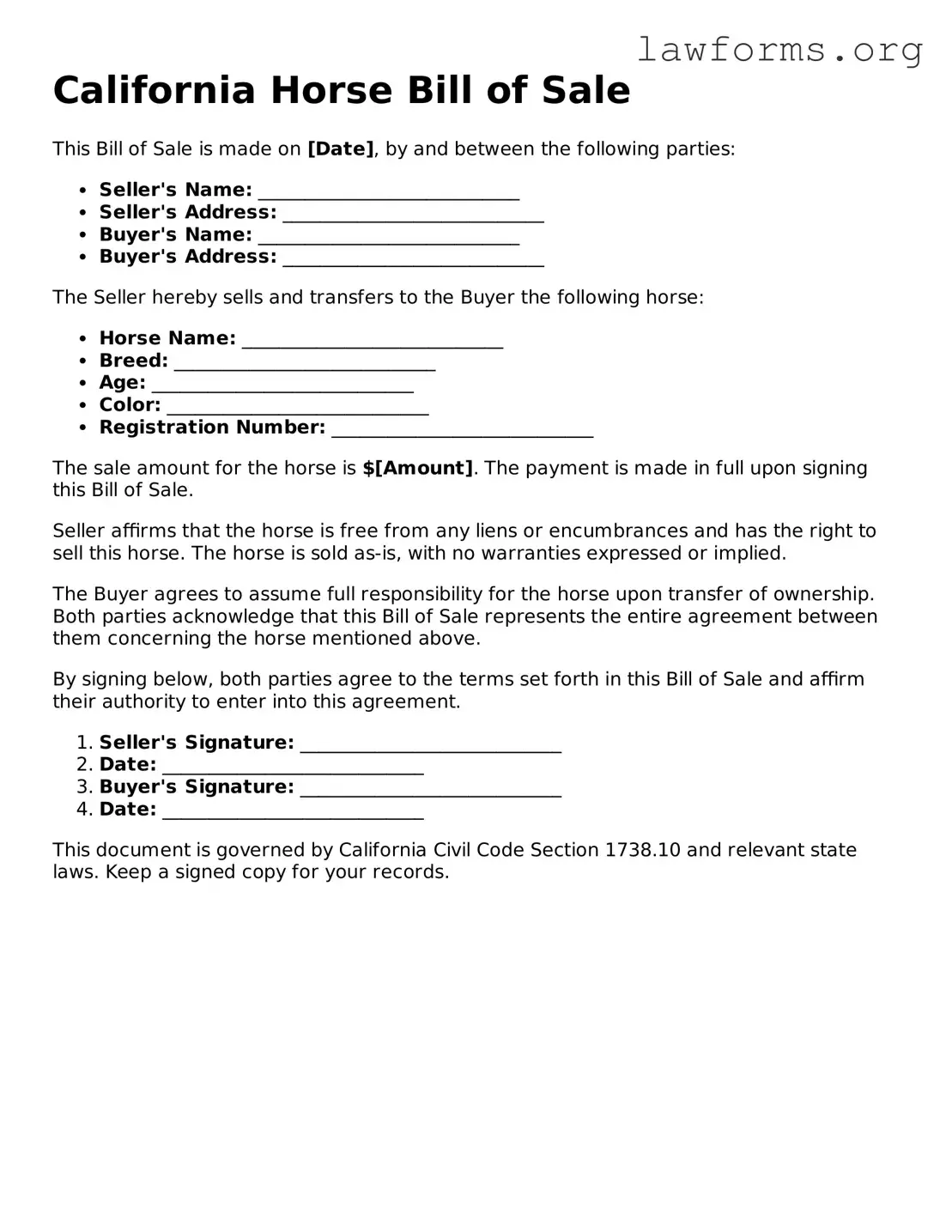California Horse Bill of Sale
This Bill of Sale is made on [Date], by and between the following parties:
- Seller's Name: ____________________________
- Seller's Address: ____________________________
- Buyer's Name: ____________________________
- Buyer's Address: ____________________________
The Seller hereby sells and transfers to the Buyer the following horse:
- Horse Name: ____________________________
- Breed: ____________________________
- Age: ____________________________
- Color: ____________________________
- Registration Number: ____________________________
The sale amount for the horse is $[Amount]. The payment is made in full upon signing this Bill of Sale.
Seller affirms that the horse is free from any liens or encumbrances and has the right to sell this horse. The horse is sold as-is, with no warranties expressed or implied.
The Buyer agrees to assume full responsibility for the horse upon transfer of ownership. Both parties acknowledge that this Bill of Sale represents the entire agreement between them concerning the horse mentioned above.
By signing below, both parties agree to the terms set forth in this Bill of Sale and affirm their authority to enter into this agreement.
- Seller's Signature: ____________________________
- Date: ____________________________
- Buyer's Signature: ____________________________
- Date: ____________________________
This document is governed by California Civil Code Section 1738.10 and relevant state laws. Keep a signed copy for your records.
